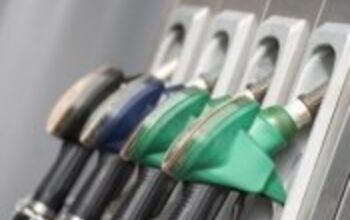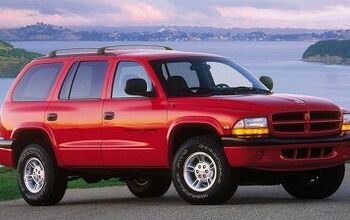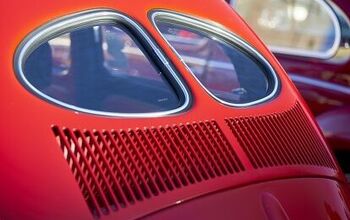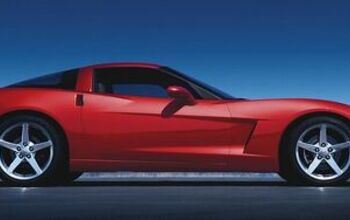Piston Slap: Fuelish Thought on Additives?

(www.arthursclipart.org)
Robin writes:
Sajeev,
Longtime reader, first time writer. I love reading your stuff, well worthwhile.
My query is about fuel additives, after-market specifically. I have used the Lucas Oil products and found them to produce a mile or two better MPG in my 94 D21 four banger. (Note: that’s a Nissan Hardbody – SM)
What is your take on additives? Have you found any others to be of significant value to the user/user’s vehicle?
Sajeev answers:
Great question, with a pretty short answer: additives are usually useless in cars that are well maintained. That’s in general. Some people swear by Lucas additives, but I am not sure of their benefit over consistent usage of synthetic fluids over the course of a vehicle’s life. And that’s worth keeping in mind, no matter how “special” you feel your circumstances may be. Can the magic bottles really be that special in something as honest and durable as a 1990s Nissan truck? Your case seems pretty clear cut.
Then again, fuel system additives are one exception, they sometimes do a great job at removing gunk (especially with varnish/corrosion/deposits that supposedly occur with E10 gas) in the fuel system, the tiny screens in the fuel injectors in particular. I haven’t personally experienced a benefit from fuel injector cleaner, but I do occasionally use it as preventative maintenance on my old cars in the land of E10 at the gas pumps. But a mile or two better MPGs? That’s pretty impressive.
That said, make sure to change your fuel filter as per manufacturer recommendations. Or sooner. That’s often a bigger problem for your fuel system.
Bonus! A Piston Slap Nugget of Wisdom:
My only additive of recommendation is Seafoam. Seafoam seems to fix everything…in motors with a lot of miles and a lot of carbon buildup. Sure, it makes a colossal mess while de-carboning the upper half of a motor, but it often improves throttle response, fuel economy and sometimes even emissions. After it increases your carbon footprint exponentially, ‘natch. This stuff is also supposedly a good fuel system cleaner, oil gunk remover and probably helps men with their Viagra-related concerns. (kidding!)
Not that I recommend everyone spend the $8 or so to try it out on your motor, but if you start running out of options after a proper tune-up on your old hooptie fails to give you satisfaction…give it a shot.
Send your queries to sajeev@thetruthaboutcars.com. Spare no details and ask for a speedy resolution if you’re in a hurry.

More by Sajeev Mehta
Latest Car Reviews
Read moreLatest Product Reviews
Read moreRecent Comments
- AZFelix I shall fully endorse the use of autonomous cars on public roads once they have successfully completed my proposed Turing test for self driving vehicles. This test requires the successful completion of an at fault incident and accident free 24/7 driving session in Buffalo and upstate New York from October 1st until March 31st, and throughout the city of Jakarta, Indonesia for one consecutive year. Only Level 1 and Level 5 vehicles are permissible.
- Lou_BC I'd go Rav4. No Mazda dealer in my town and from what I've seen, Mazda's tend to rust.
- Steve Jacobs I've got a bright Red Kia EV6. Easy to find in a parking lot.
- MKizzy Gently used EV6's under $30K aren't hard to find and have the range and style to almost intrigue me into taking the EV plunge. However, I'll wait for a mid-sized non-luxury EV sedan or wagon which is not a tablet housing a car (Model 3) or sacrifices too much usable space for the sake of style (Ioniq 6) before I go electric. I'm not holding my breath.
- Arthur Dailey Am currently comparing both vehicles. Some issues not addressed in the article 1) the wait times for most RAV4's are currently considerably longer, 2) RAV4's are among the most stolen vehicles in my area (the GTA), 3) Mazda has a superior warranty. Manufacturing locations are perhaps a toss up. For the majority of these vehicles sold in the Canadian market from what I can ascertain, CX-5's are manufactured in Japan, and RAV4's in Alliston Ontario. One area where I will disagree with Matt is in the upholstery. I far prefer cloth to leather. With grandchildren and a dog, there is far more chance that the leather will be cut or scratched. And leather, particularly in black is too hot in the summer and very cold when you first sit on it during a Canadian winter. Cloth is the winner in that competition, but still an inferior choice to rich 1970's style velour upholstery.


































Comments
Join the conversation
Only additives we use in my house are Seafoam, Lucas for the oil and Stabil for the winter (and in the generator etc). The Seafoam's good for pissing off the neighbors, especially if said neighbors piss you off with car-related stuff. That and it does seem to work, made the S10's 4.3 idle smooth (well, as smooth as a 90º non-balancer V6 can be) and under the valve covers looked better. My Dakota's 3.9 is next! The Lucas we use in the Metro since it has leaky valve seals and puffs oil smoke at start up. It seems to have cut down on that a lot, either me or my dad will add 1/2 a quart to the oil every change. Before I started driving it the S10 got some benefit from it too- the 4.3 suffers all the same high mileage valve-seal problems as its small block parents. Now I just ignore it and check the oil! As for the Stabil it's good for keeping gas from turning into varnish, or at least our generator, lawn mowers, weed whacker, hedge trimmers, etc make it seem that way.
been out of town and return to find this piece on my favorite site! My cousin had some thoughtful input that made me feel a bit better about using Lucas: " I use Lucas in all my cars. Not for fuel economy but to keep rubber parts lubricated (especially on the 30 year old bimmer). Ethanol is horrible for that stuff. It also helps to lubricate the fuel pump and its associated parts and the upper cylinder walls as well as helping to prevent carbon buildup."